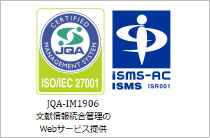ホームIMICライブラリMMWR抄訳2016年(Vol.65)男性間性交渉者およびHIV治療中の男性に対する付帯・・・
2016/09/23Vol. 65 / No. 37
MMWR65(37):1004-1007
Unmet Needs for Ancillary Services Among Men Who Have Sex with Men and Who Are Receiving HIV Medical Care — United States, 2013–2014
男性間性交渉者およびHIV治療中の男性に対する付帯サービスに関する満たされていないニーズ ― アメリカ、2013~2014年
アメリカでは、HIV感染は男性同性愛者や両性愛者などの男性間性交渉者(MSM)に多い。HIV治療の継続や日常生活を支援する付帯サービスは、HIV感染MSMの健康状態を改善し、ウイルス抑制達成の助けとなる。CDCは、外来にてHIV治療を受けるMSMにおいてニーズを満たしていない付帯サービスについて評価するため、面談または電話によるインタビュー調査Medical Monitoring Projectのデータを解析した。2013~2014年、ニーズに対し最も不足と回答された項目はHIV治療以外の医療サービスであり、歯科医療(23%)、眼科医療または視力ケア(19%)、精神保健医療(6%)が挙げられた。HIVサポートサービスでは、HIV患者同士のグループサポート(8%)が最も多かった。日常生活支援では、食料栄養支援(12%)、交通費補助(7%)、保護施設または住居支援(7%)が多かった。18~29歳、30~39歳、40~49歳の年齢層では、歯科医療、保護施設または住居支援、食料栄養支援の不足が多く、30~39歳および40~49歳では眼科医療および視力ケア、精神保健医療の不足が多かった。非ヒスパニック系黒人MSMは、歯科医療(27%)、交通費補助(9%)、保護施設または住居支援(10%)、食料栄養支援(14%)に対する不足が非ヒスパニック系白人MSMにおける不足(それぞれ20%、6%、5%、10%)に比べ多かった。ヒスパニック系/ラテン系MSMでは保護施設または住居支援(8%)、食料栄養支援(14%)に対する不足が多かった。HIV患者同士のグループサポート、交通費補助または食料栄養支援が不足と回答したMSMのうち約40%は、それらの支援を得る方法を知らなかった。歯科医療や眼科医療、視力ケアが不足と回答したMSMのうち25%は費用の、28%は保険の問題からそれらのサービスを受けていなかった。また、保護施設または住居支援(20%)、交通費補助(15%)、食料栄養支援(14%)サービスの対象者であることについて認識が低いか誤っていた。州や自治体の関係者および医療者は、MSMやHIV感染者の付帯サービスの利用を促進するため、支援を得る方法についてより周知すべきである。
References
- CDC. HIV surveillance report, 2014, vol. 26. Atlanta, GA: US Department of Health and Human Services, CDC; 2015. <http://www.cdc.gov/hiv/pdf/library/reports/surveillance/cdc-hiv-surveillance-report-us.pdf>
- Conviser R, Pounds MB. The role of ancillary services in client-centred systems of care. AIDS Care 2002;14(Suppl 1):S119–31. <http://dx.doi.org/10.1080/09540120220150018>
- CDC. Behavioral and clinical characteristics of persons receiving medical care for HIV infection—Medical Monitoring Project, United States, 2013 Cycle (June 2013–May 2014). HIV surveillance special report 16. Atlanta, GA: US Department of Health and Human Services, CDC; 2016. <http://www.cdc.gov/hiv/pdf/library/reports/surveillance/cdc-hiv-hssr-mmp-2013.pdf>
- Bradley H, Viall AH, Wortley PM, Dempsey A, Hauck H, Skarbinski J. Ryan White HIV/AIDS Program assistance and HIV treatment outcomes. Clin Infect Dis 2016;62:90–8. <http://dx.doi.org/10.1093/cid/civ708>
- Singh S, Bradley H, Hu X, Skarbinski J, Hall HI, Lansky A. Men living with diagnosed HIV who have sex with men: progress along the continuum of HIV care—United States, 2010. MMWR Morb Mortal Wkly Rep 2014;63:829–33.
- The White House Office of National AIDS Policy. National HIV/AIDS Strategy for the United States. Washington DC: The White House Office of National AIDS Policy; 2010. <https://www.whitehouse.gov/sites/default/files/uploads/NHAS.pdf>
- Leaver CA, Bargh G, Dunn JR, Hwang SW. The effects of housing status on health-related outcomes in people living with HIV: a systematic review of the literature. AIDS Behav 2007;11(Suppl):85–100. <http://dx.doi.org/10.1007/s10461-007-9246-3>
- Health Resources and Services Administration. Ryan White HIV/AIDS Program annual client-level data report 2014. Washington, DC: US Department of Health and Human Services, Health Resources and Services Administration; 2015.
- Weiser J, Beer L, Frazier EL, et al. Service delivery and patient outcomes in Ryan White HIV/AIDS Program-funded and nonfunded health care facilities in the United States. JAMA Intern Med 2015;175:1650–9. <http://dx.doi.org/10.1001/jamainternmed.2015.4095>
- Beane SN, Culyba RJ, DeMayo M, Armstrong W. Exploring the medical home in Ryan White HIV care settings: a pilot study. J Assoc Nurses AIDS Care 2014;25:191–202. <http://dx.doi.org/10.1016/j.jana.2013.10.007>
Copyright © 2013 International Medical Information Center. All Rights Reserved.












